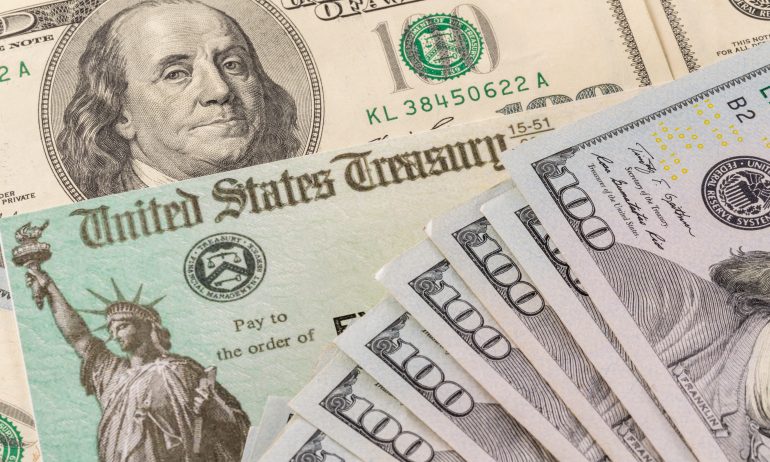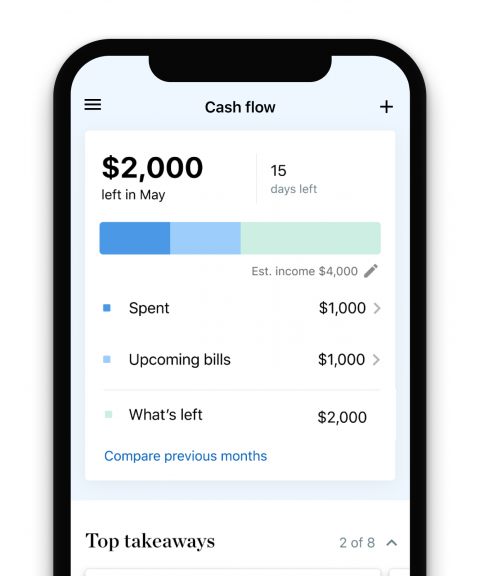Updated on June 18.
The national debt is projected to exceed $50 trillion from 2025 to 2034, according to a report released on June 18 by the Congressional Budget Office. The increase in the cumulative deficit is primarily due to increased spending and interest expenses surpassing tax revenue.
The estimate is 10% higher than the CBO’s previous projection for the cumulative 10-year deficit in February — about $2.1 trillion greater.
The report also found that by the end of the fiscal year, the national debt is on pace to grow by $1.9 trillion. That is 27% higher than was projected in February — about $400 billion greater.
The national debt is the sum total of all the money the United States government has borrowed but not yet repaid. The figure represents how much the U.S. owes its creditors, which includes the American public, foreign governments, securities holders and even its own government agencies.
What is the U.S. national debt?
The U.S. national debt currently stands at more than $34.2 trillion, according to the U.S. Treasury Department. That might sound like a staggering sum — and in many ways, it is. But it’s helpful to consider that amount in its broader context. Economists like to compare a nation’s debt against its gross domestic product, which measures the value of all goods and services produced in that country, to get a fuller picture of a nation’s ability to repay those debts.
For example, in the fourth quarter of 2022, the U.S. debt-to-GDP ratio was 120.2%, according to U.S. Treasury data retrieved by the Federal Reserve Bank of St. Louis. Basically, that means the national debt accounts for roughly 120.2% of its annual GDP. If that GDP was, say, $100, you could infer that the national debt would be $120. For comparison, Japan’s debt-to-GDP ratio in 2021 was an estimated 220.5%, and France’s debt-to-GDP was about 116.5%, according to data from The World Bank.
» In the news: When will the government run out of money?
How does the national debt work?
Like an everyday citizen, the federal government both earns and spends money. It makes much of its money by collecting taxes. It spends that revenue on programs and services for citizens, as well as interest on debts. When the government spends more than it earns, it has a budget deficit.
So the government has to borrow money to pay off that deficit. The national debt is the aggregate amount of money, plus interest, that the government owes its borrowers.
The national debt is made up of several kinds of debt, just like an individual’s debts might include credit card debt, a car payment, student loans and a mortgage. Some of the different kinds of debt that make up the national debt include:
Marketable securities. Marketable securities are assets that can be bought and sold on different markets. They can come in many different forms — bonds, bills or company shares, for example — that can be quickly converted into cash.
The Treasury offers five kinds of marketable securities: bills, notes, Treasury inflation-protected securities, floating rate notes and bonds.
Non-marketable securities. Non-marketable securities, on the other hand, are different types of financial securities that cannot be easily sold or converted to cash. Examples of non-marketable securities include U.S. savings bonds or a share of a private company.
Intragovernmental debt. Intragovernmental debt is money that one government agency owes another.
Debt held by the public. Publicly held debt includes federal debts held by companies, local or state governments or individuals — basically, any entity that isn’t the U.S. federal government.
» In the news: What happens if the U.S. can’t pay its bills?
Whom does the U.S. owe money to?
These countries held the largest volumes of U.S. Treasury securities as of January 2023, according to the U.S. Treasury's most recently available data.
Japan: $1.1 trillion in Treasury securities
China: $859.4 billion in Treasury securities
The United Kingdom: $668.3 billion in Treasury securities
Belgium: $331.1 billion in Treasury securities
Luxembourg: $318.2 billion in Treasury securities
The U.S.’s intragovernmental debts total $6.8 trillion. Meanwhile, federal debts held by the public add up to $24.6 trillion, according to the U.S. Treasury.
When has the national debt risen?
Spikes in the national debt go back hundreds of years. The Treasury notes that the debt greatly increased during the Revolutionary and Civil Wars, as well as in World War I and World War II.
More recently, the government borrowed significant sums during the Afghanistan and Iraq Wars and the 2008 recession. The U.S. national debt has since risen every year in the past decade.
The Treasury reports that national spending rose 50% between fiscal years 2019 and 2021, mostly due to the pandemic. Major spending, paired with significant tax cuts, is part of how the government arrived at its current national debt of $34.2 trillion.
Why does the national debt matter?
The national debt is a bellwether of a nation’s economic health. When a country starts carrying a lot of debt, individuals and companies may lose confidence in the economy, which can affect how they spend or invest their money. For example, if certain investors lose confidence in the U.S.’s ability to pay down its debts, they might sell off Treasury bonds, which would weaken the dollar.
Declining confidence in the U.S. government could also raise interest rates, which would then hamstring individuals and companies who need to borrow money, too. That’s a recipe for waning investments and slower economic growth — both of which would adversely impact workers’ wages.



